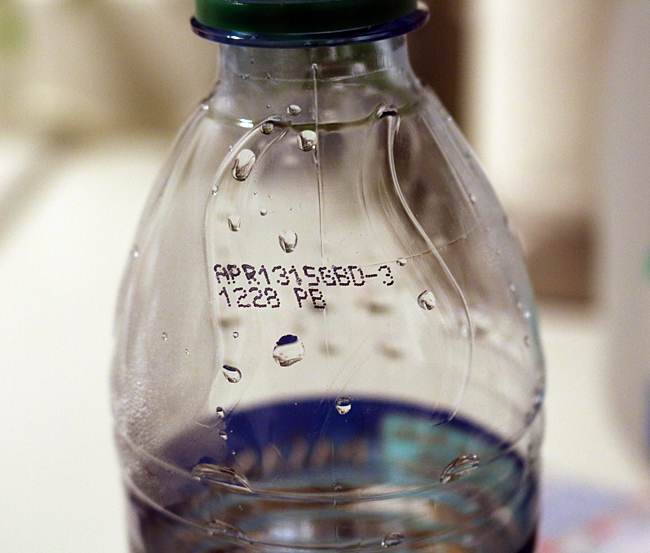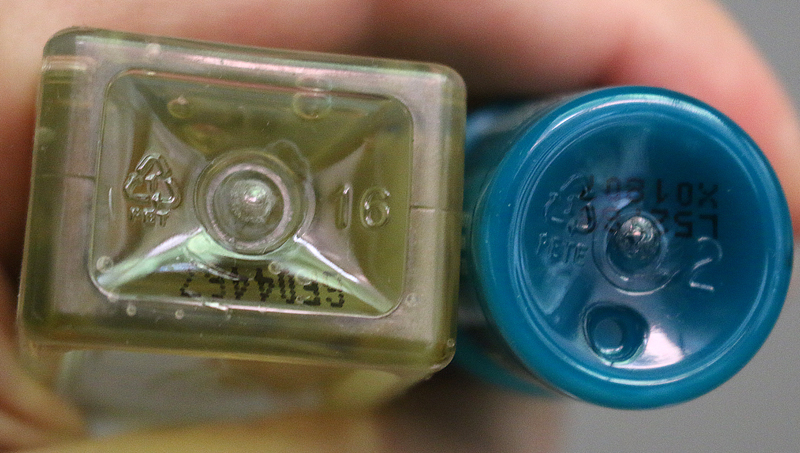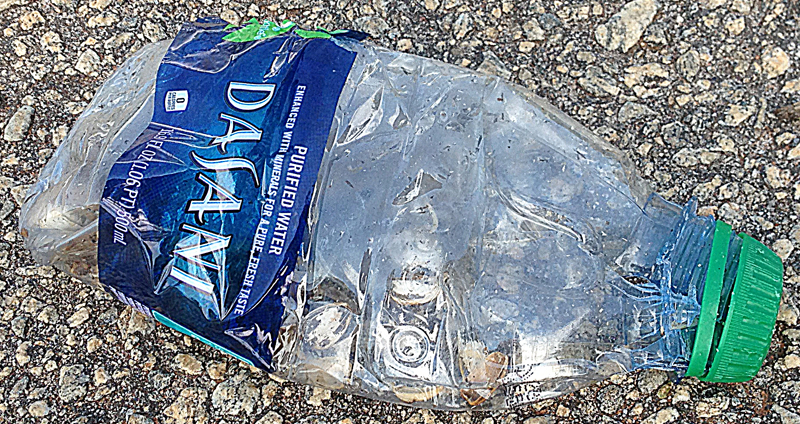As part of its Zero Waste Concessions Program which was launched earlier this year, San Francisco International Airport will become the first major commercial airport in the United States to ban the sale of disposable plastic water bottles effective as of Tuesday, August 20, 2019.
Sale of Single Use Disposable Plastic Water Bottles Banned by San Francisco International Airport

A goal of San Francisco International Airport is to reduce single-use disposable plastics — which is one of the significant sources of waste that is generated at the airport — by requiring shops, eateries, and airline lounges located within the airport to transition to reusable, compostable, and recyclable alternatives; and to sell or serve bottled water in containers with reusable options. This includes recyclable single-use and multi-use aluminum and glass and compostable products which are certified by the Biodegradable Products Institute, Incorporated.
“A single plastic bottle takes 500-1000 years to break down. That’s why we’re prohibiting the sale of plastic bottled water. Bring your own bottle next time you #FlySFO and fill up at one of SFO’s 100+ hydration stations”, according to this message which was posted at the official Twitter account of San Francisco International Airport.
https://twitter.com/flySFO/status/1157443539283914752
Bottled water includes drinking water — including still, mineral, purified, carbonated or sparkling, and electrolyte-enhanced water — in a sealed box, bag, can, bottle, or other container intended primarily for single-service use and is a maximum volume of one liter.
Greater than 100 hydration stations and drinking fountains have been installed in all terminals of the airport to expand access and encourage passengers to refill their reusable bottles or refillable bottles with filtered water from Hetch Hetchy Valley in the northwestern part of Yosemite National Park.
Zero Waste Plan of San Francisco International Airport
The Zero Waste Concessions Program of San Francisco International Airport is a key measure which is part of a broader initiative called the Zero Waste Plan, which also includes the reduction of waste from food service ware:
- Serving all prepared food and beverages in reusable or compostable food service ware — such as cups, to-go containers and cutlery as three of many examples — which are certified by the Biodegradable Products Institute, Incorporated with no added fluorinated chemicals.
- Providing straws upon request.
- Providing food service ware accessories — such as lids, cutlery and stir sticks as three of many examples — at self-service kiosks or upon request.
- Cups which are at least ten percent reusable to be available at events with greater than 100 attendees.
“The Recent Collapse of the Plastic Recycling Market”

“This initiative supports the City and County of San Francisco’s Plastic, Litter, and Toxics Reduction Law and is a part of an effort to address plastic pollution and the recent collapse of the plastic recycling market”, according to this article from the official Internet web site of San Francisco International Airport. “In addition to reducing the impacts on the natural environment, this transition will make food service ware safer for use and simplify and improve the passenger dining experience.”
If this is the first you have heard of the ”recent collapse of the plastic recycling market”, you are not alone. Despite extensive efforts to ensure that as much plastic is recycled as possible, the efforts have apparently failed.
“For decades, we were sending the bulk of our recycling to China — tons and tons of it, sent over on ships to be made into goods such as shoes and bags and new plastic products”, according to this article written by for The Atlantic. “But last year, the country restricted imports of certain recyclables, including mixed paper — magazines, office paper, junk mail—and most plastics. Waste-management companies across the country are telling towns, cities, and counties that there is no longer a market for their recycling. These municipalities have two choices: pay much higher rates to get rid of recycling, or throw it all away.”

Robert Reed — who is a spokesman for Recology, which is a company based in San Francisco and owned by its employees whose mission is to build exceptional resource ecosystems — was quoted in the article as saying that items which are “made of different types of plastic nearly always end up in the trash, because recyclers can’t separate the plastics from one another.” He “equates it with trying to get the sugar and eggs out of a cake after you’ve baked it. But because companies don’t bear the costs of disposal, they have no incentive to manufacture products out of material that will be easier to recycle.”
Educating people pertaining to how to recycle plastic — and other recyclable products — properly is also a massive and expensive effort. In order for recycled products to be in demand for purchase, they must be almost completely “clean” and as free of contaminants as possible — a goal which has long been difficult to achieve.
Even today, purchasing newly created plastic products is less expensive than their recycled counterparts, due to the skyrocketing costs of recycling — forcing companies and government entities to abandon recycling efforts and either dump the unwanted items in landfills…
…or worse: burn the plastic refuse, which purportedly releases toxic chemicals into the air.
The recent collapse of the plastic recycling market is only one of the reasons which may be the impetus for governments and multinational companies to move forward full speed ahead in banning single-use plastic containers instead of ramping up recycling efforts even further.
- As part of its overall efforts to reduce plastic waste, InterContinental Hotels Group has announced that the miniature bottles and tubes provided in the bathrooms of almost 843,000 guest rooms across greater than 5,600 hotel and resort properties will be replaced with what it calls “bulk-size bathroom amenities”, with completion of this initiative expected sometime during the year 2021.
- Personal care products in the form of miniature plastic toiletry bottles — which contain fewer than 12 ounces of liquid product — became one step closer to be banned from lodging establishments in California effective as of Sunday, January 1, 2023, as members of the State Assembly of California voted 50-24 on Wednesday, May 29, 2019 to pass the bill into law, according to this article which I wrote here at The Gate back on Thursday, June 6, 2019.
Summary

Despite the claim that a single plastic bottle takes between 500 years and 1,000 years to break down, that does not mean that the container will last that long. I tend to take plastic water jugs — such as the ones seen in the photograph above — and repurpose them. Unfortunately, sometimes a jug will develop a leak because it is cheaply constructed. The plastic used to create them will far survive the usefulness of the defective jugs themselves. This only exacerbates the problem of disposing of plastic containers, as who would want to keep a defective cheap product which is considered disposable anyway?
The other problem we face is whether or not plastic really is everywhere. Are we really ingesting approximately five grams of plastic every week, which is enough to eat one credit card per week?
As I have written in multiple articles, recycling should be the answer — but unfortunately, recent policy changes from multiple entities in the acceptance or refusal to recycle plastic refuse has significantly increased the cost of recycling plastic products overall.
Responsibility and accountability need to be addressed by the entities who are causing this problem: companies which manufacture and sell products with plastic; and consumers who do not even think twice about purchasing multiple products which comprise of disposable single-use plastic.
Items designed for single use should be manufactured out of materials which are easier and inexpensive to recycle — or at least be easily biodegradable — so that we do not face stuffing oversized landfills or polluting the air with unwanted plastic. Why can’t a straw be constructed out of cardboard or paper which is durable enough for a single use?
I, for one, would not mourn the use of less plastic in our society, as I value the health and environment in which I live. We need to manufacture products with materials which keep the environment in mind while simultaneously ensuring that it is cost effective and keeping the effort as minimal as possible.
In the meantime, do not be surprised if additional airports announce similar initiatives to the aforementioned one by San Francisco International Airport.
All photographs ©2014, ©2015, ©2016 and ©2017 by Brian Cohen.

